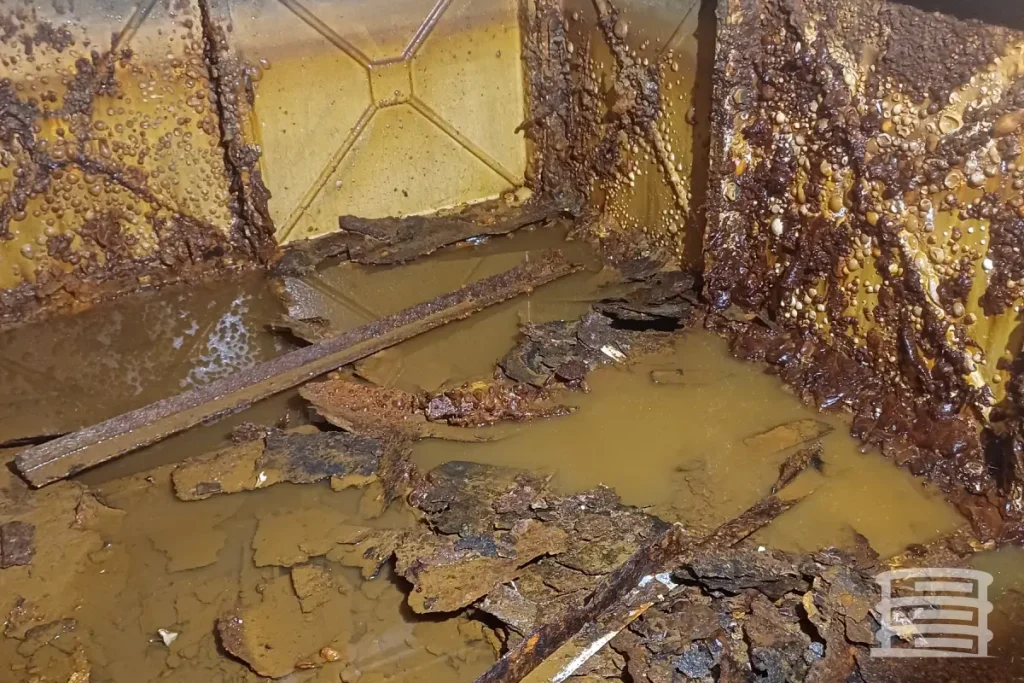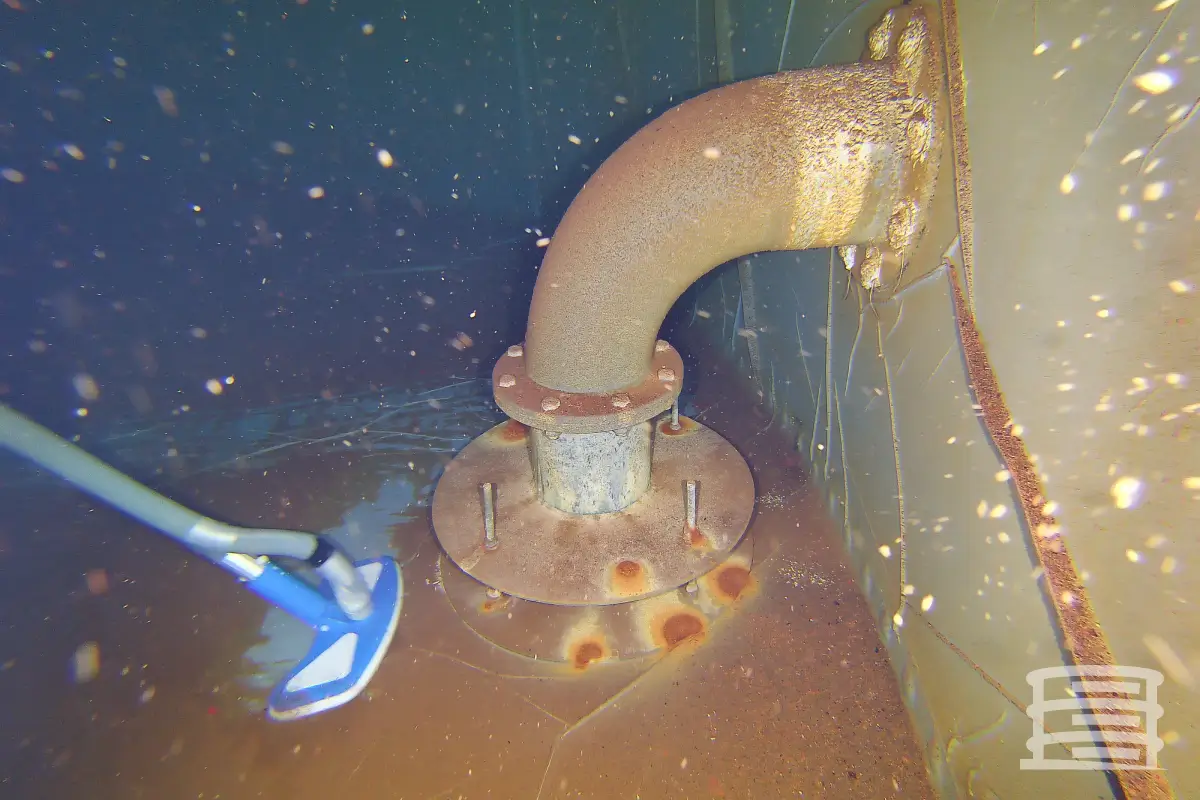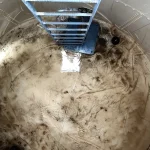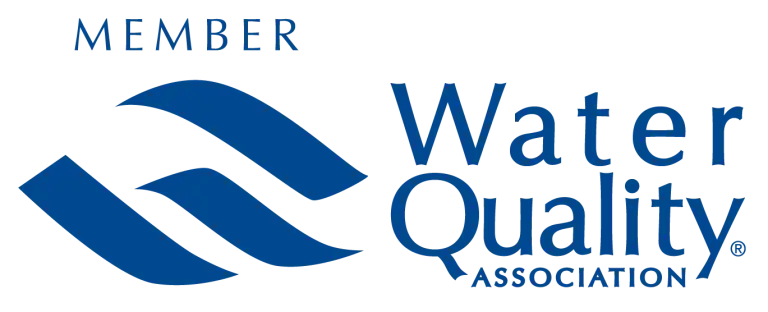Regular inspections and cleanings of water storage tanks are necessary to maintain good water quality in the distribution system and extend the tank’s lifespan. Regular inspections help identify minor issues before they become major problems, which could pose health risks, require costly repairs, or lead to premature tank failure. Neglected tanks may cause contamination incidents that are harmful to human health or raise aesthetic concerns.
One of the main reasons for conducting regular water tank inspections is to identify potential issues. Rainfall and snowmelt runoff can introduce contaminants into water tanks by carrying microorganisms into the system or infiltrating underground.
The Risks of a Dirty Water Tank
A large reservoir of still water can pose significant health hazards. Mosquitoes, drawn to the stagnant water, breed prolifically, increasing the risk of mosquito-borne diseases like West Nile virus or malaria. Additionally, the lack of water movement allows bacteria and mold to thrive, potentially contaminating the water supply and causing illness.
How Often Must You Inspect Your Water Tank?
The frequency of inspections and cleanings can vary depending on the type of tank and water quality. It’s recommended to inspect a water storage tank at least every five years, or more often if required by state regulations. Cleaning and repairs should be scheduled based on the findings from the tank inspection. It’s also advisable to conduct additional inspections between maintenance intervals.
Failure to perform regular maintenance or inspections may result in premature damage to your water tank. Additionally, a poorly maintained water tank can lead to increased expenses for cleanup.
A commercial water storage tank operates continuously day and night to ensure a consistent and uninterrupted water supply for the establishment’s needs. Therefore, conducting regular inspections of the tank, both externally and internally, is crucial. Regular inspections help identify minor issues early on, preventing them from developing into more complex and costly problems, especially those related to corrosion. Timely detection of internal corrosion, which could lead to external surface corrosion, is essential to prevent expensive repairs or tank replacements in the future.
Inspecting a commercial water storage tank can be done through two main methods: dry inspection and ROV inspection. Let’s explore these two methods further.
Dry
This approach is commonly employed in practice. It entails emptying the tank of water, enabling inspection personnel to enter and evaluate the interior for any indications of damage or other concerns. Specific protocols are followed during the inspection procedure. If any damage is identified, repairs are promptly undertaken. In certain instances, basic tank cleaning is adequate for maintenance purposes.

ROV:
ROV, short for remote-operated vehicle, presents an advanced method for inspecting water storage tanks. Conducted by trained inspection professionals, this technique enables controlled exploration of the tank’s interior using specialized equipment, with live footage streamed on a monitor. If any defects are discovered during the inspection, they are addressed similarly to the dry method, which may involve recording the findings on a DVD.
Both inspection methods involve compiling a comprehensive report detailing the discoveries, facilitating the prompt implementation of necessary actions.
Commercial water storage tanks play a crucial role during emergencies, ensuring a continuous supply of clean water when required. With their increasing popularity and demand, there is a wide range of options available to choose from. Depending on specific needs and requirements, various commercial water storage tanks are readily accessible.
Despite their primary purpose of storing clean water for human consumption, potable water storage tanks can ironically become sources of contamination they are designed to prevent.
Any container holding water for an extended period is susceptible to various forms of deterioration, potentially leading to breaches that allow additional contaminants to enter.
Therefore, it is essential to enlist the services of a competent water tank inspection company for routine assessments. These inspections are vital for promptly identifying emerging issues, enabling corrective measures to be taken before significant damage occurs.
Regular water tank inspections streamline the creation of a cost-efficient maintenance regimen for water tanks, which can help mitigate:
- High expenses associated with tank rehabilitation.
- Costs related to water treatment.
- The need to replace an entire tank of stored water if contamination occurs.
Regular Inspection of Tanks Reduces Risks
Water contaminated with pathogens such as waterborne bacteria presents a health hazard, especially for individuals with weakened immune systems, as it can lead to illness.
Regular and timely inspections of storage tanks, combined with maintenance measures, are the most efficient and cost-effective ways to mitigate such risks and ensure the safety of potable water for consumption.
For further discussion on any of the topics mentioned above, our knowledgeable and friendly customer service team is available to assist you. We provide reliable services in Houston, Texas, and Long Beach, California.
Call NFPA 25 Inspections by American Tanks at +1 800 656 0167
Or email at info@nfpa25inspections.com







